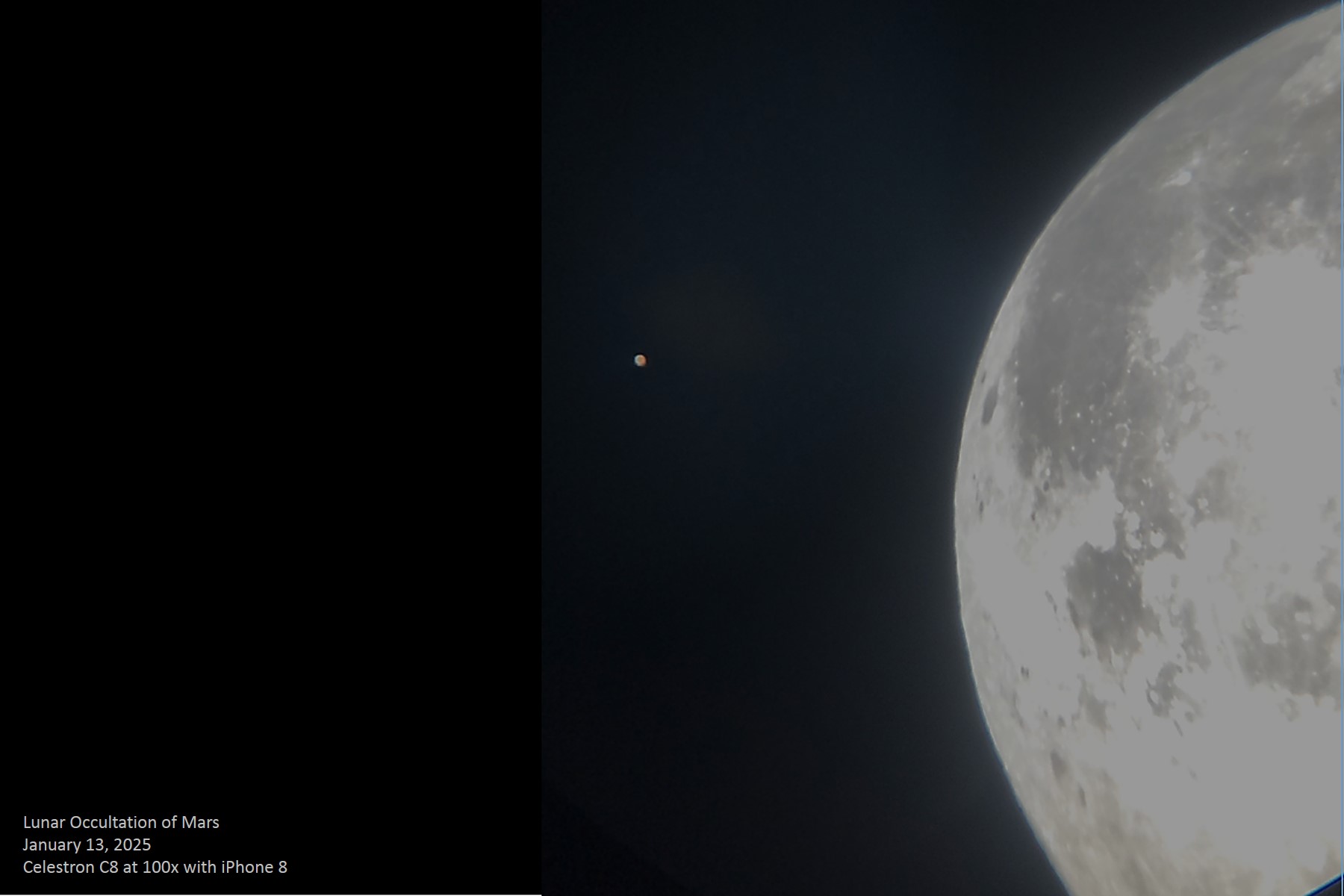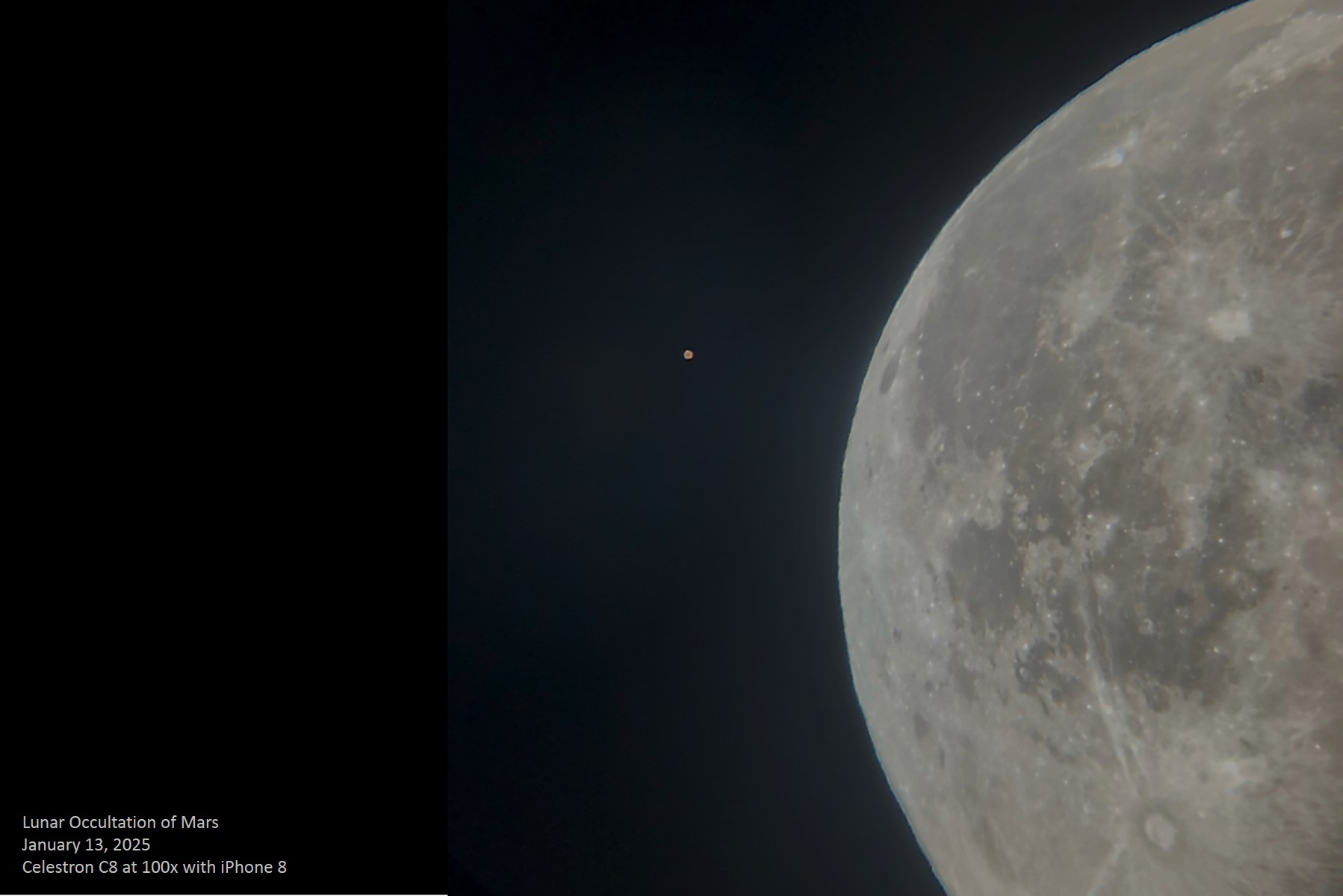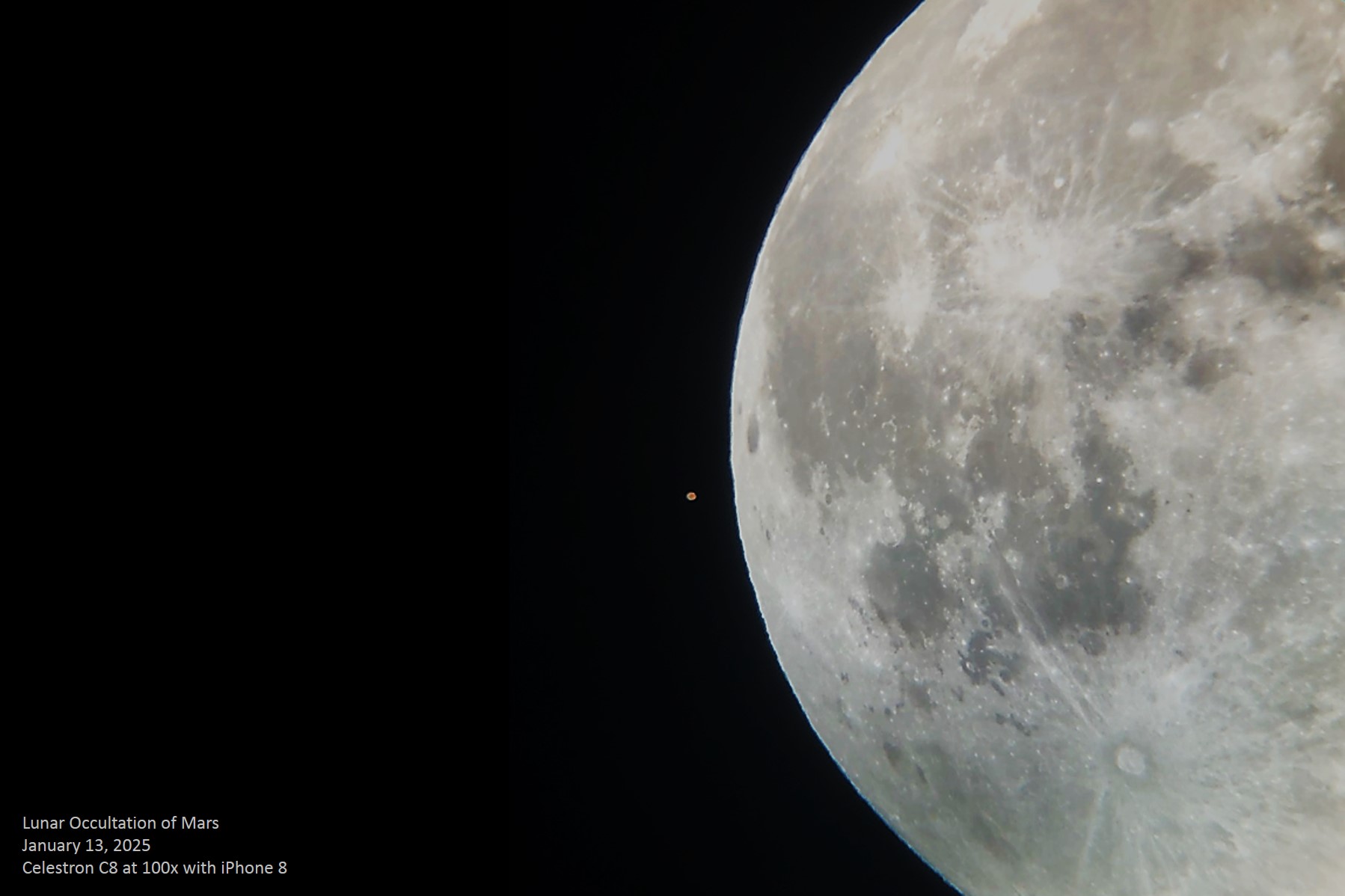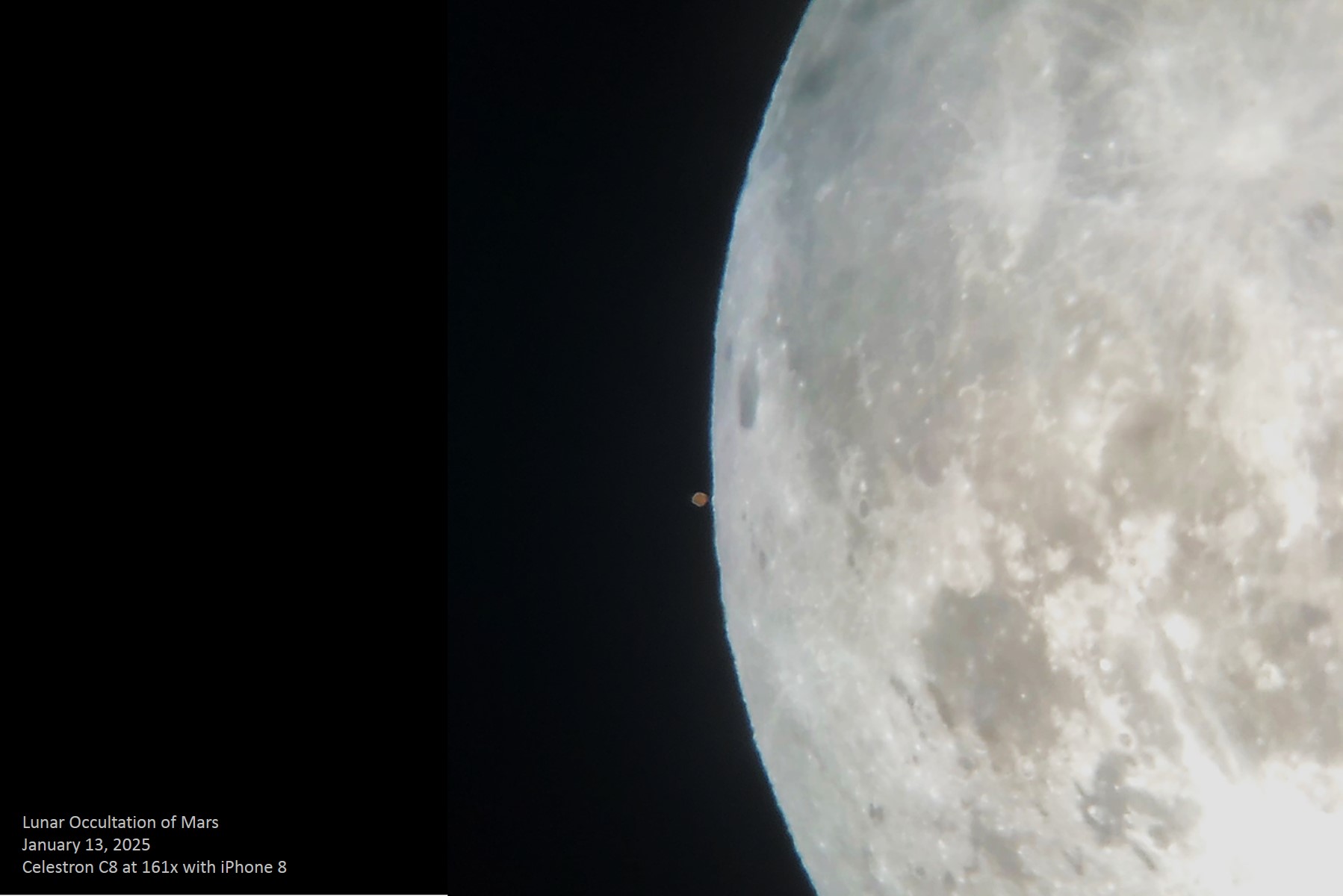

On the night of January 13 - 14, the full Moon occulted Mars. Our skies were crystal clear and the temperatures were very mild, probably in the mid thirties; our viewing conditions were almost perfect considering what they could have been at this time of year.
In central Virginia, we observed the event high in the eastern sky in mid-evening; as the Moon and Mars climbed, the gap between them closed until finally the Moon covered the planet.
The equipment I set up for the event was a
1970's vintage Celestron C8 telescope with
a 20 mm Erfle eyepiece yielding 100x; then
right before the start of the occultation,
I switched to a 12.4 mm Erfle eyepiece for
161x. All the images were obtained via the
afocal technique by holding my iPhone 8 up
up to the eyepiece. The views of the event
through the telescope were excellent owing
to the great seeing. I could make out the
north polar cap and the dark coloration of
Mare Acidalium just below the it, the dark
areas of Sinus Meridiani, Mare Erythraeum,
and Solis Lacus on the southern limb.
A quick search revealed that the albedo of
the Moon is 0.12, while the albedo of Mars
comes in at 0.17. I could not discern any
significant difference between them as the
Moon approached Mars. The explanation may
be that the Moon's given albedo must be an
average of the reflectivity of bright high-
land areas and the darker mare regions.
As the two grew closer Mars was juxtoposed
against a brighter area of the Moon, so at
that point I could tell that Mars appeared
less bright in terms of surface brightness.
My perception was that the Moon covered up
Mars very quickly. I did not time it, but
it appeared to take less than a minute.

